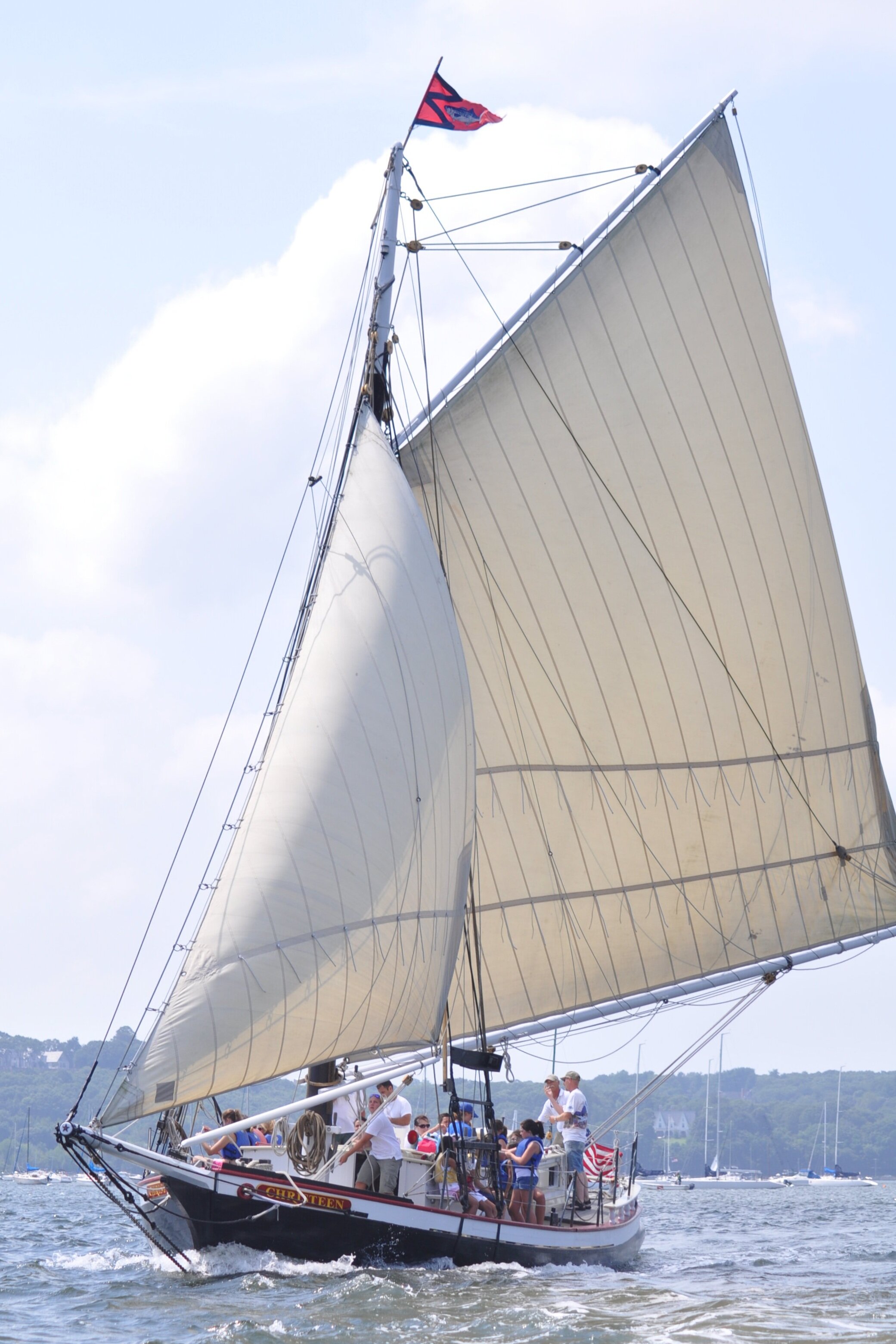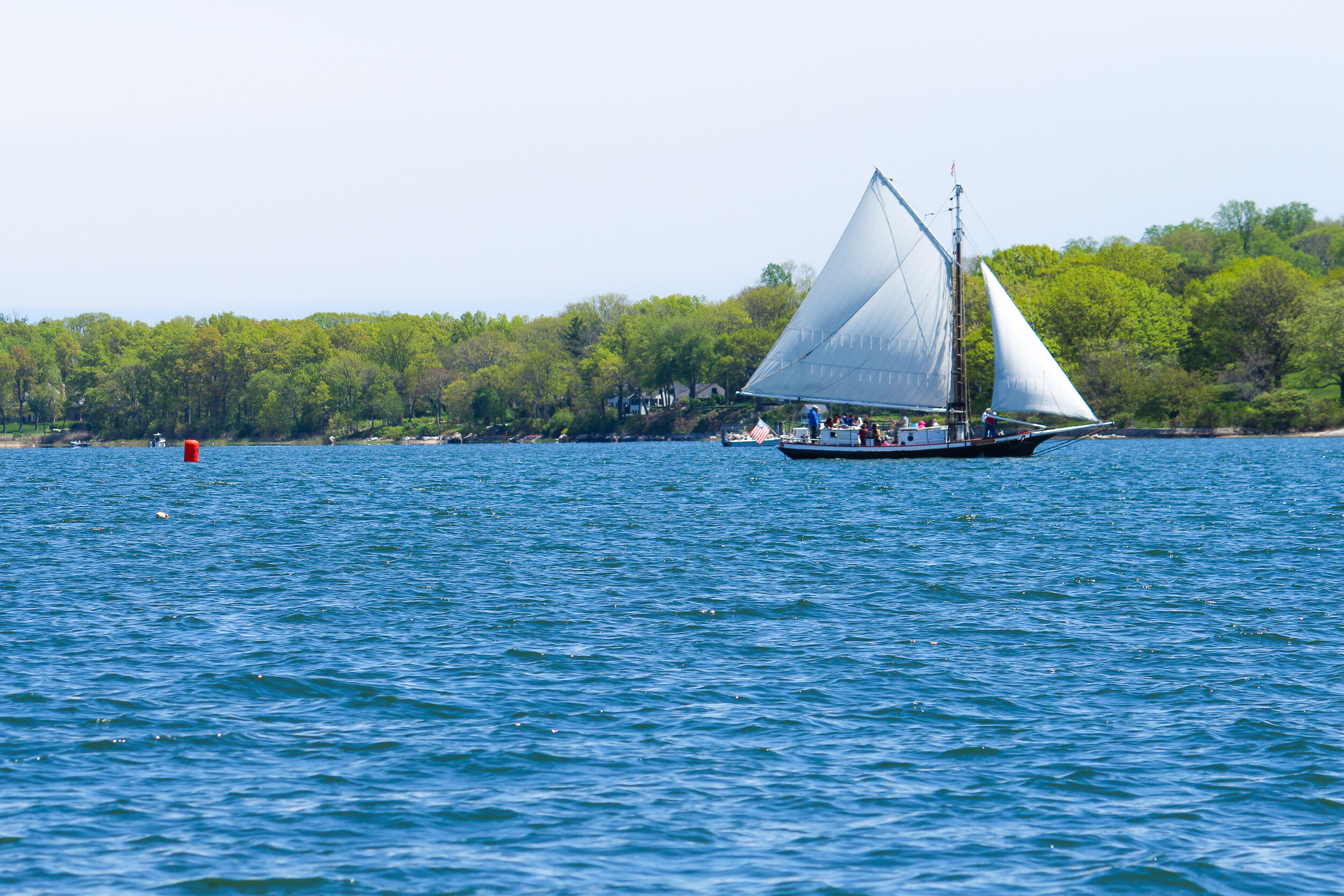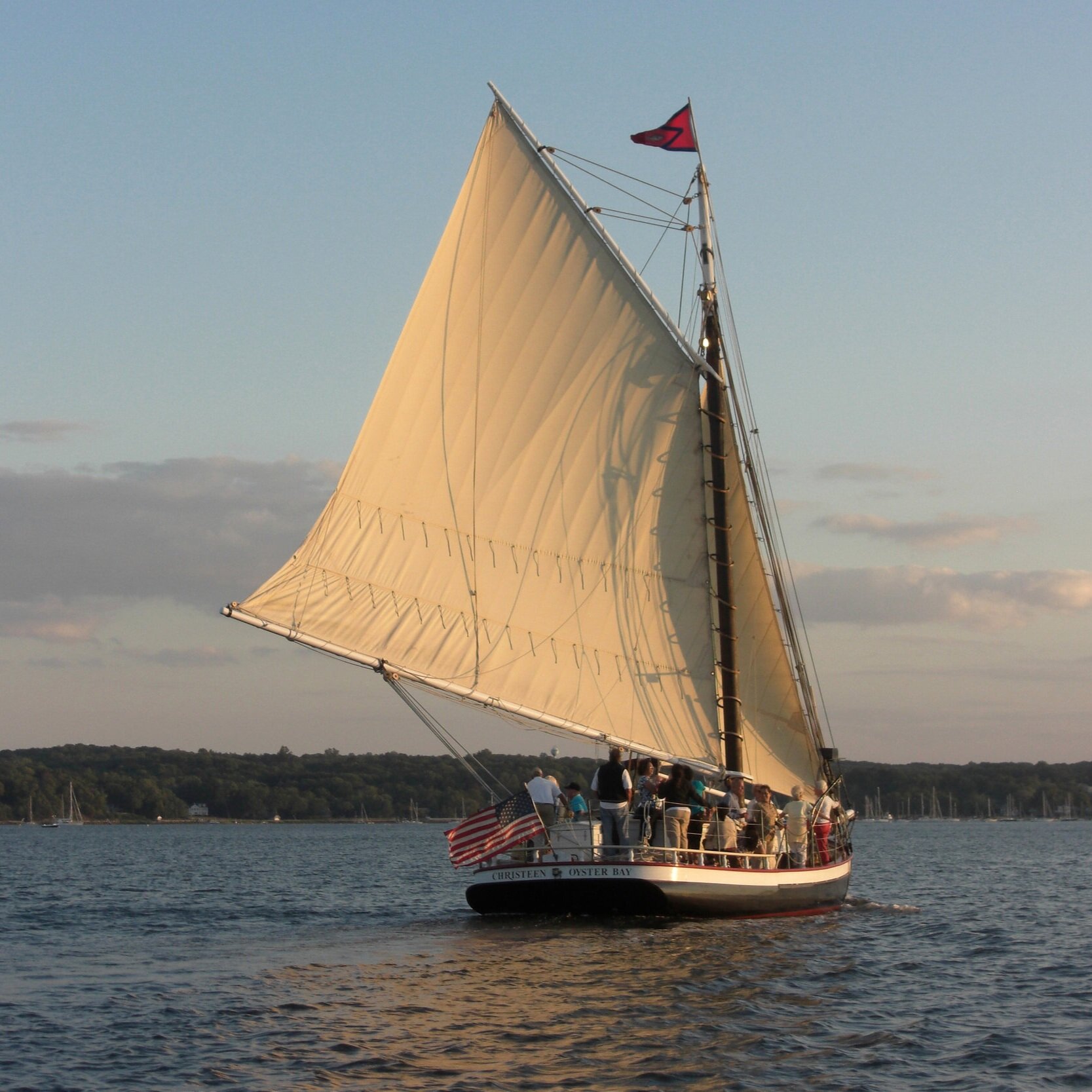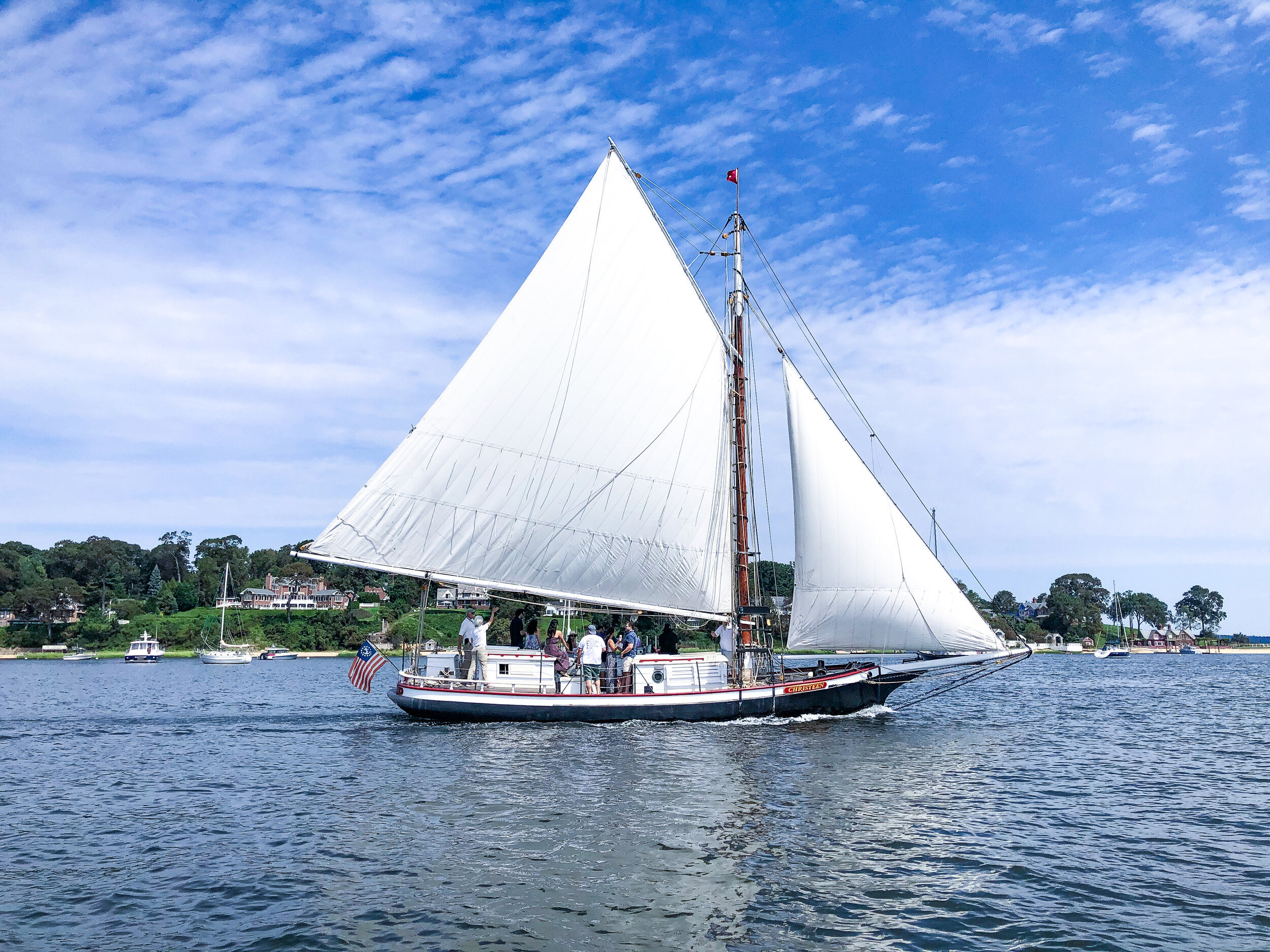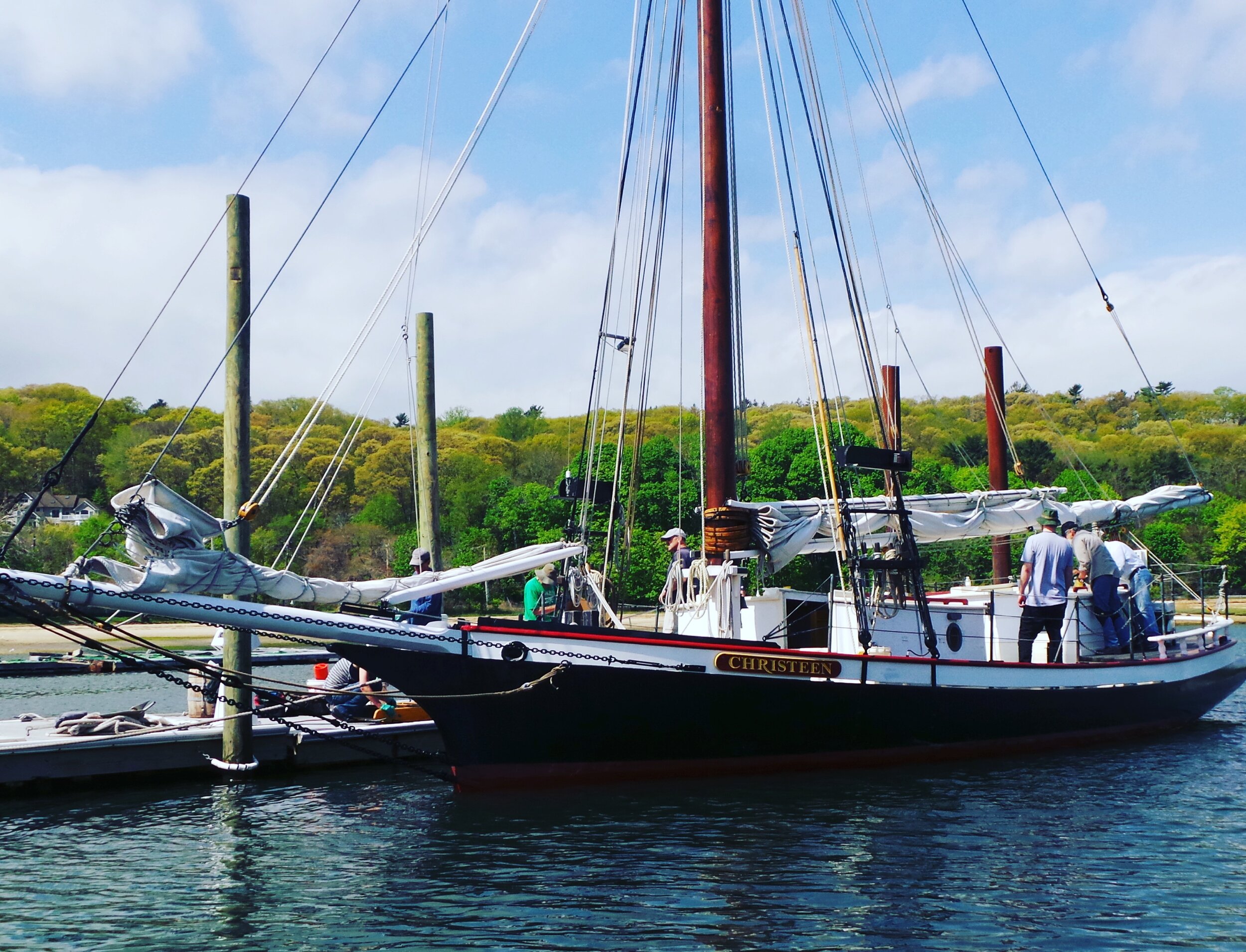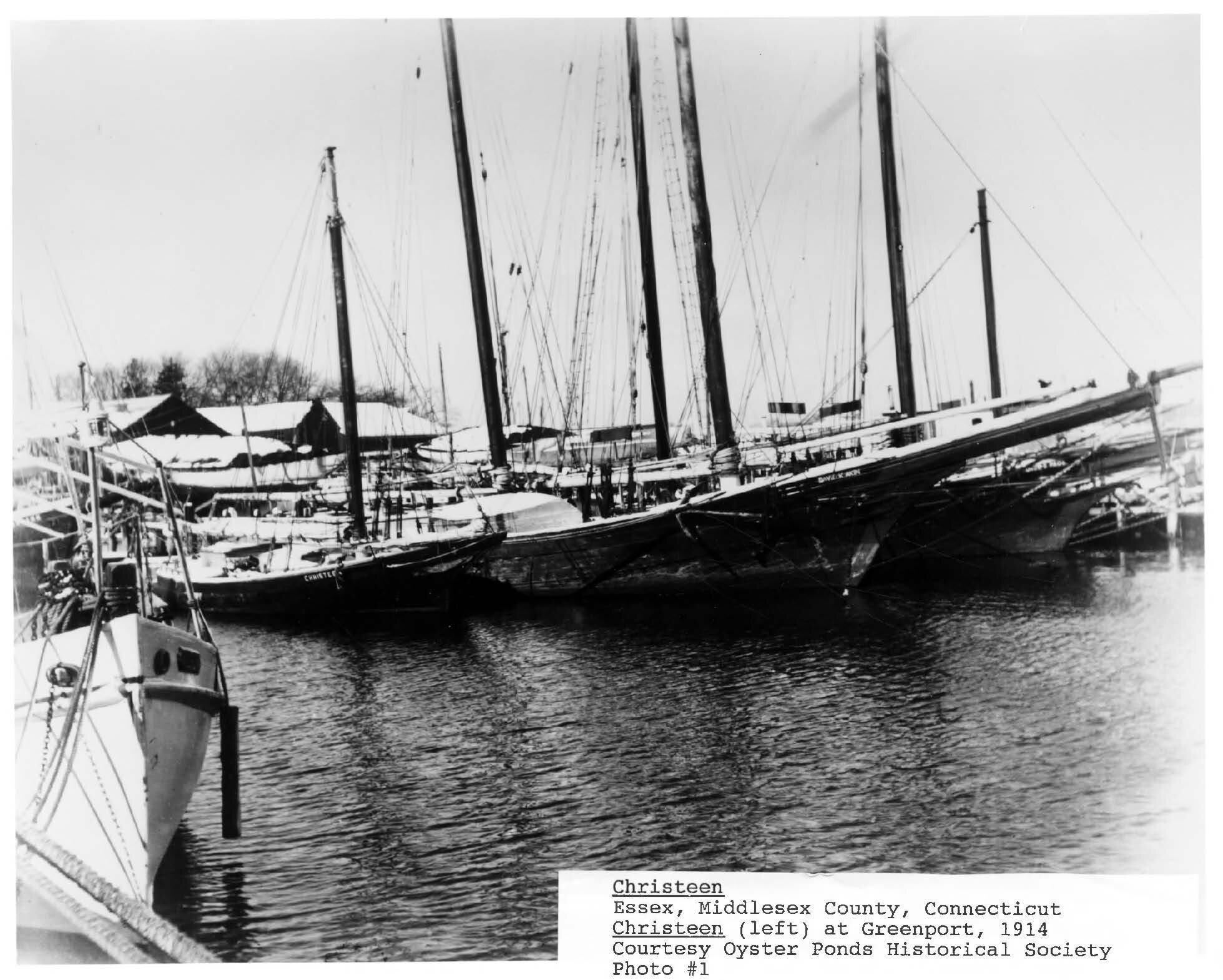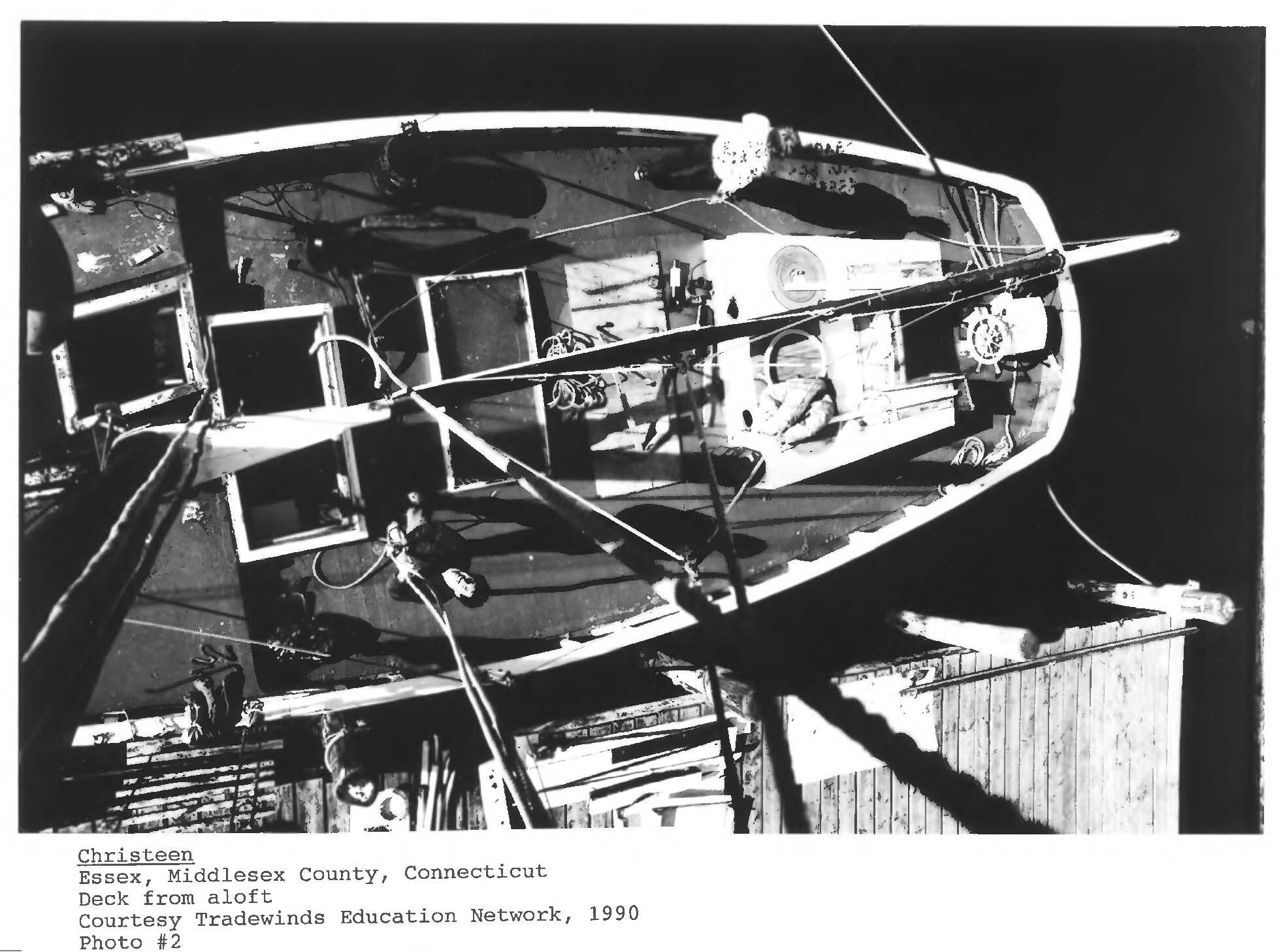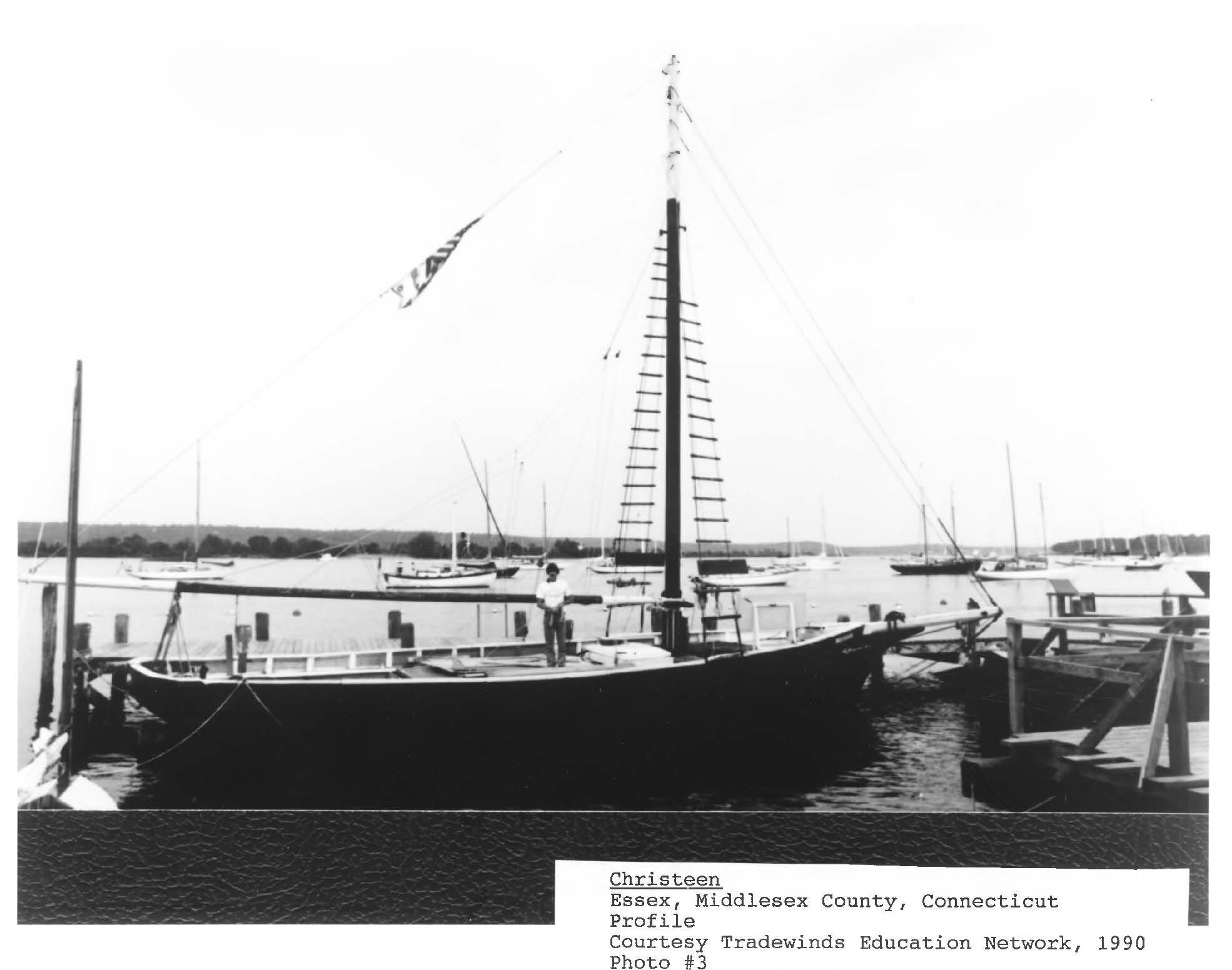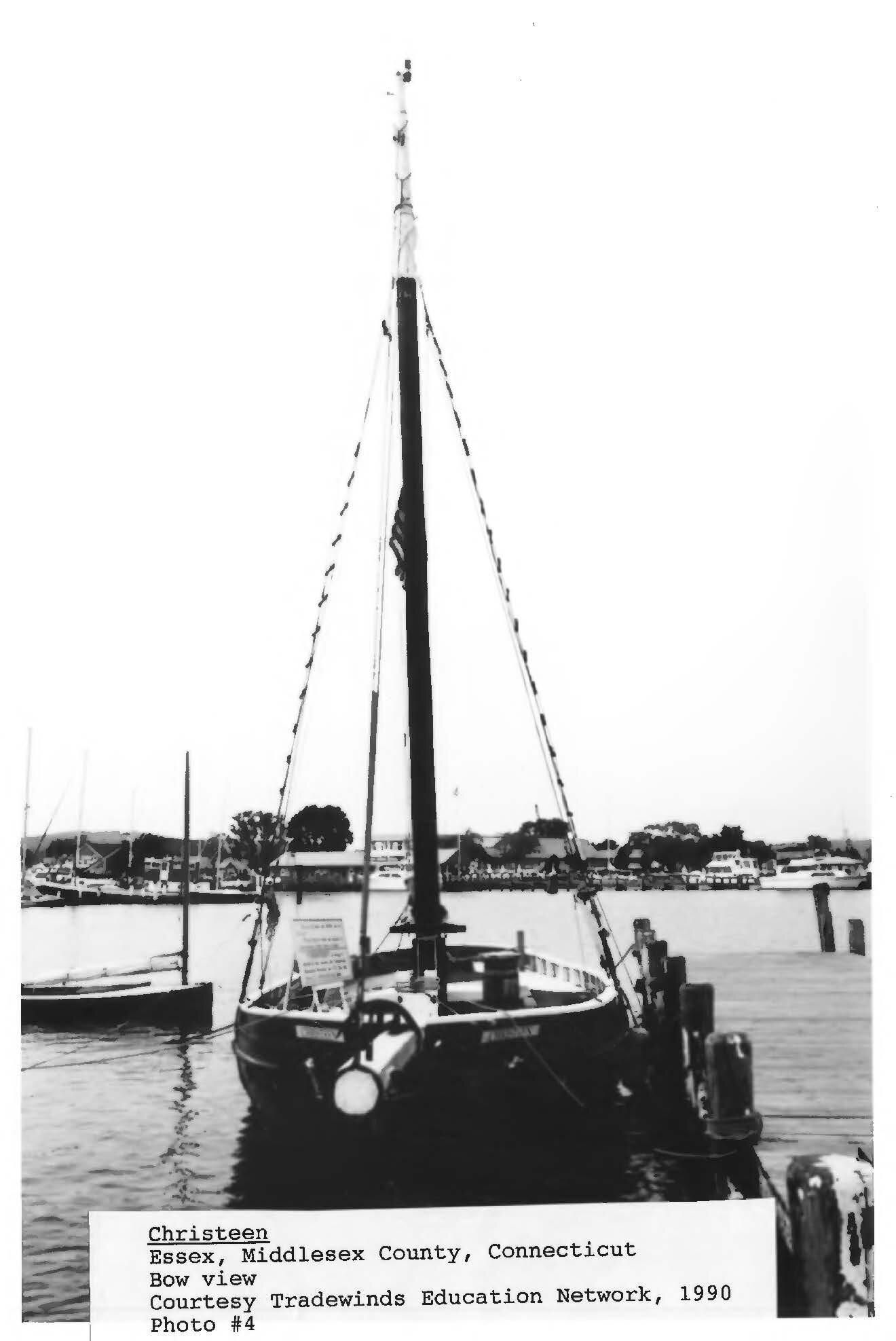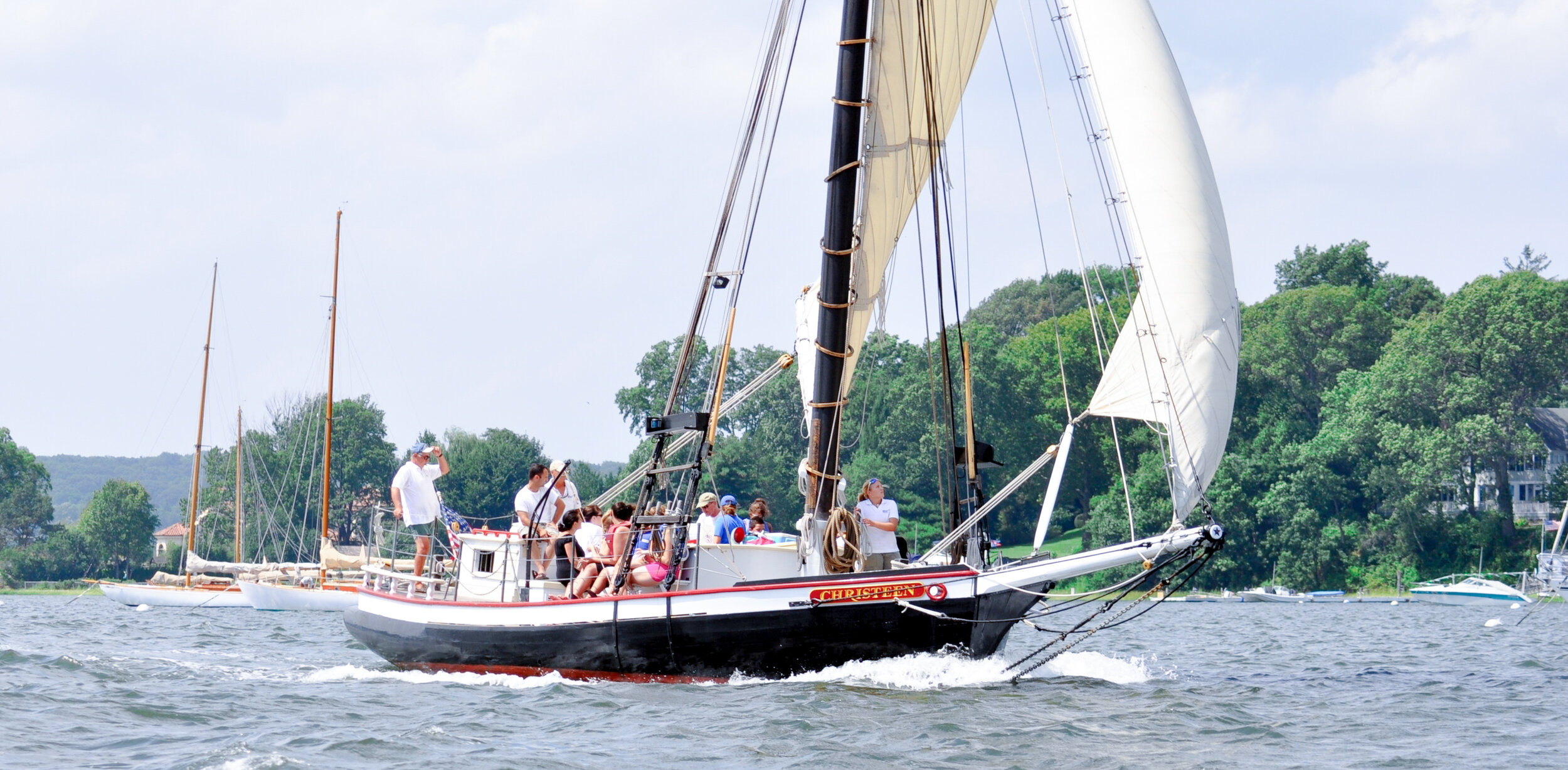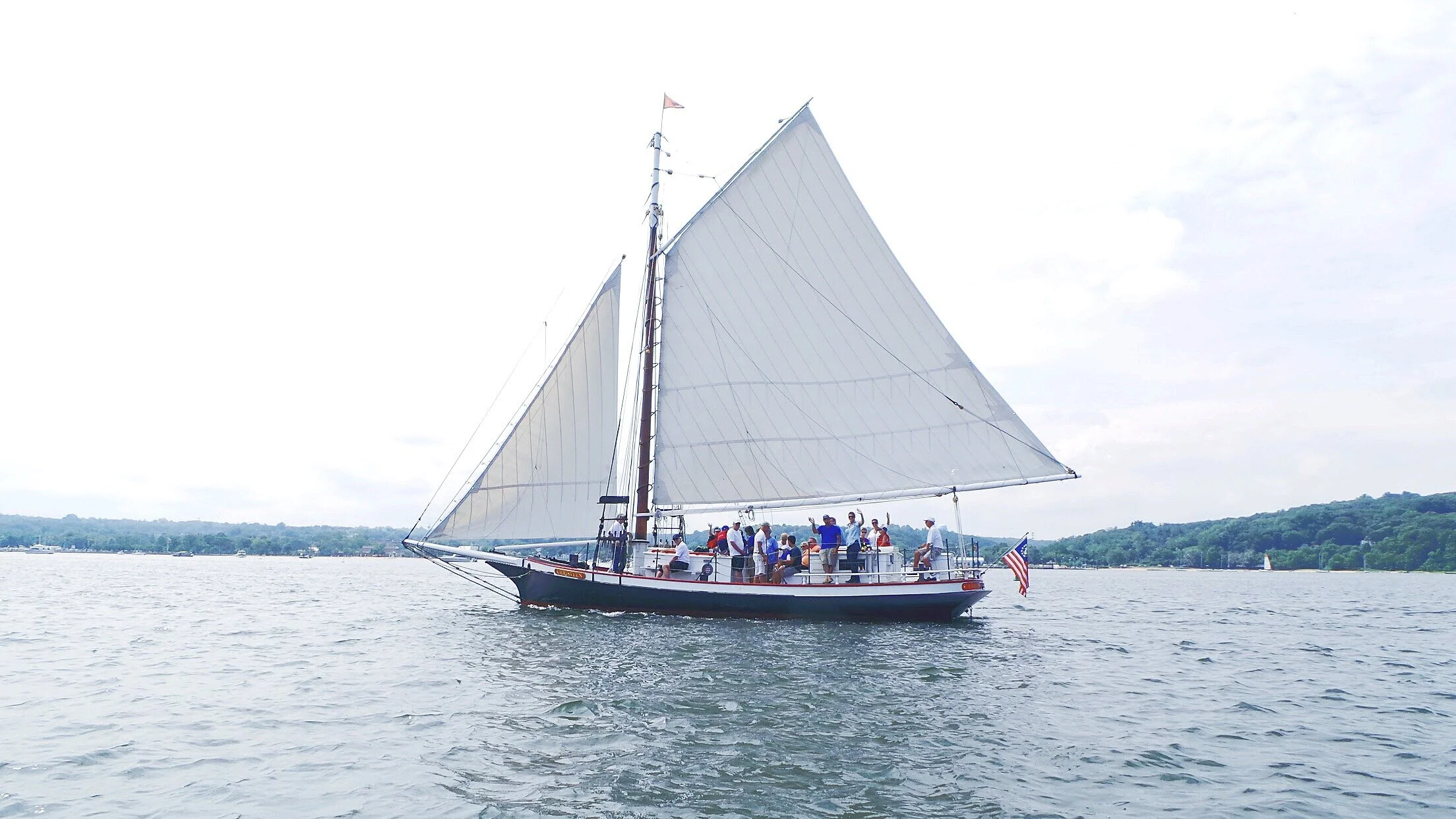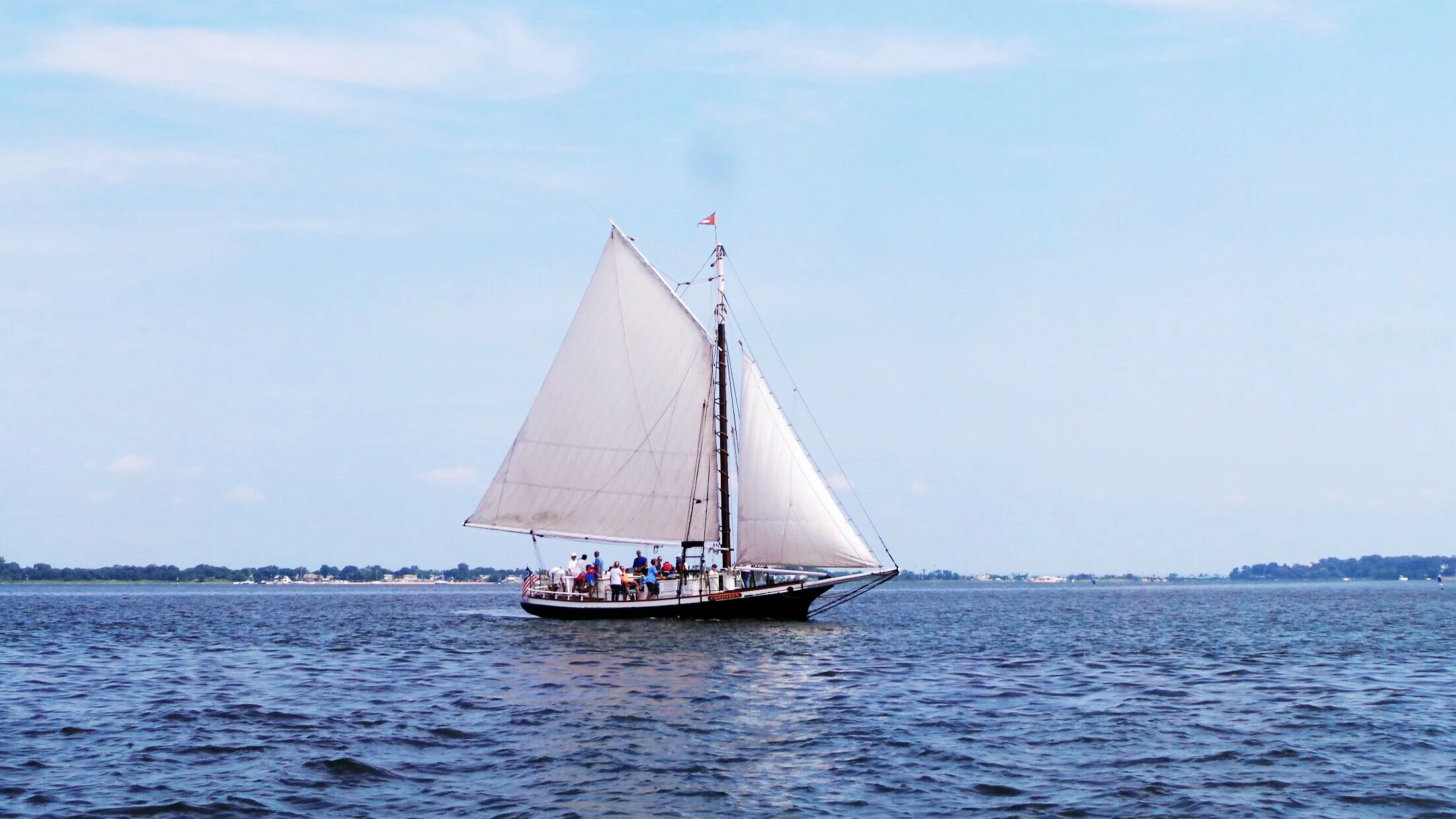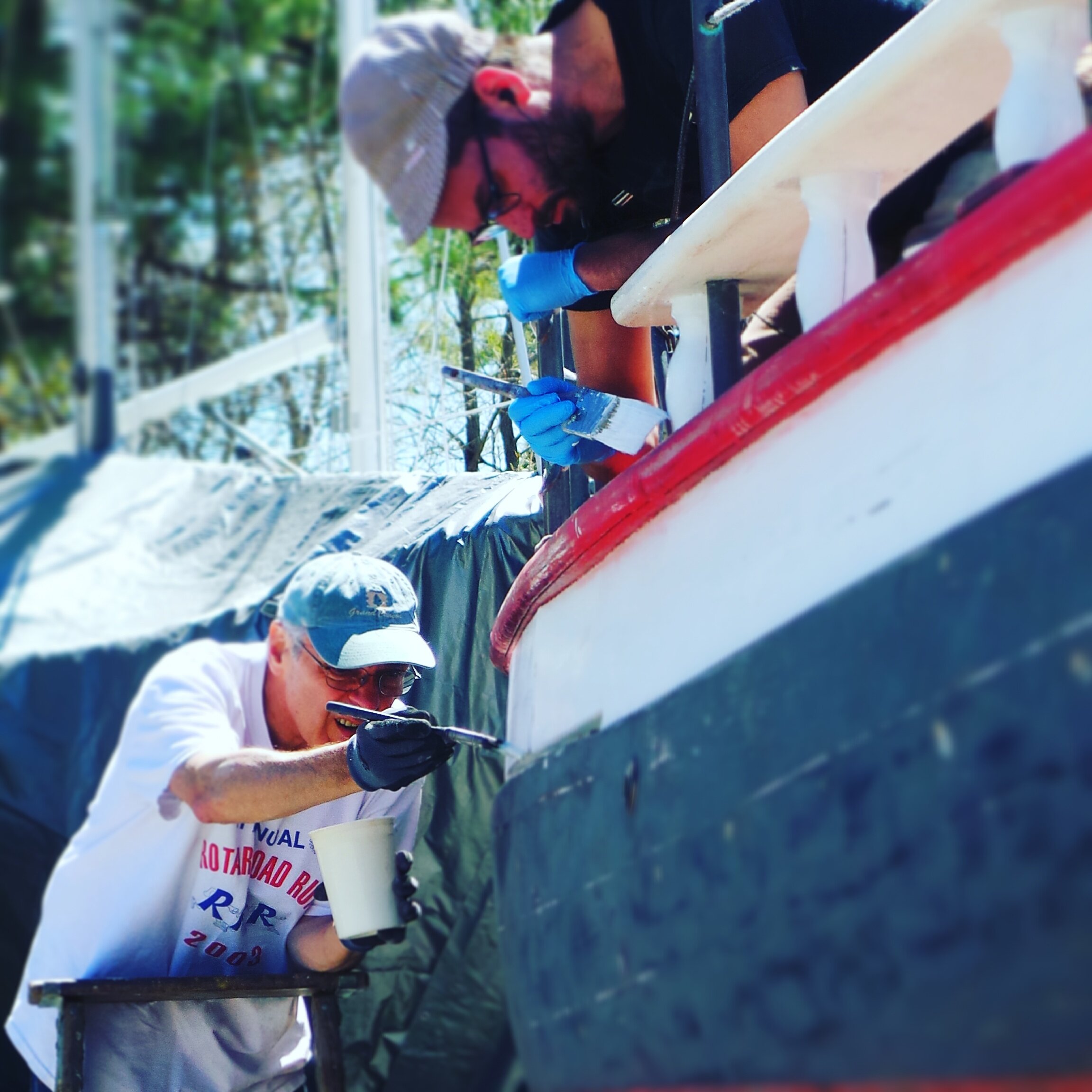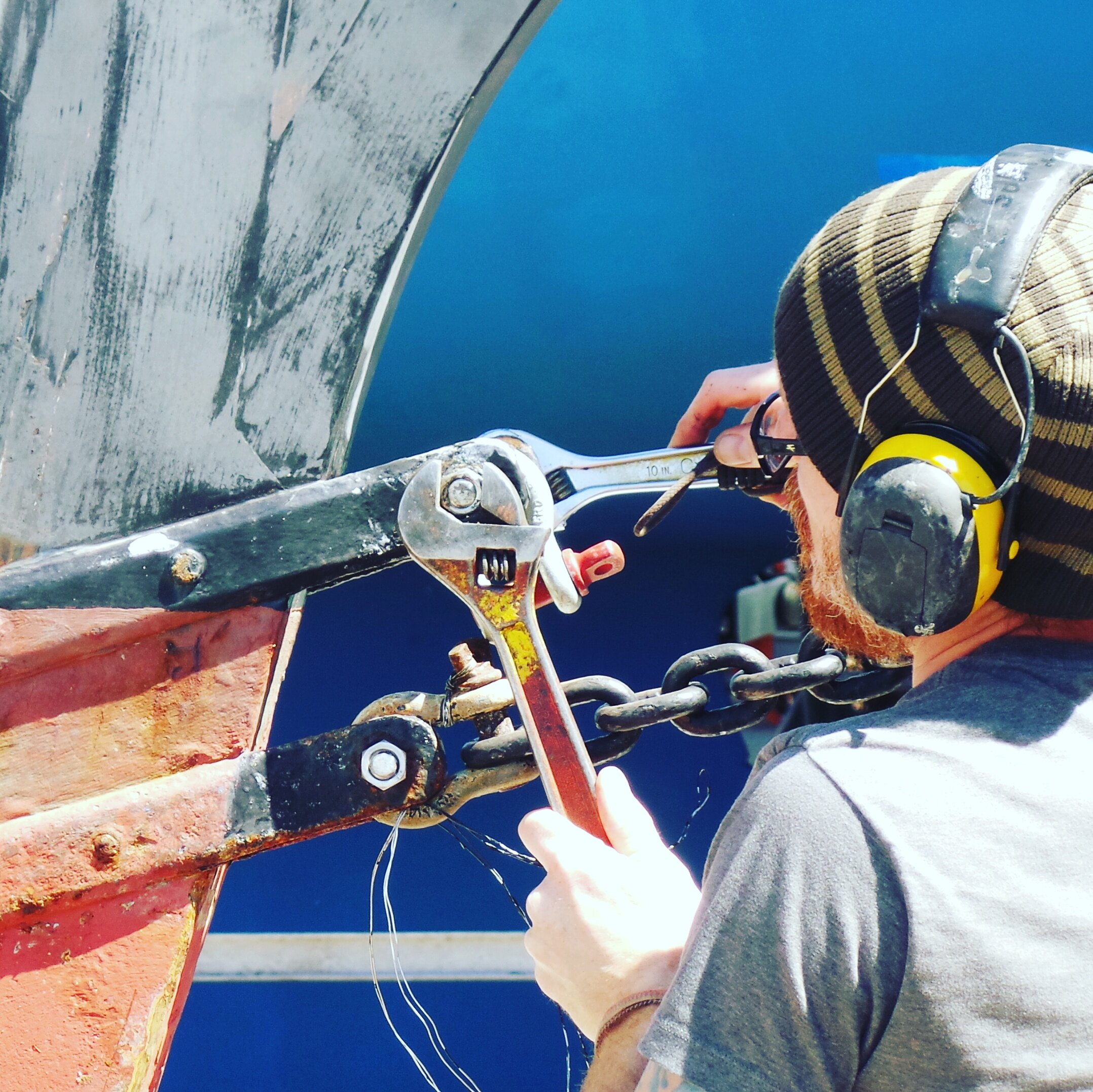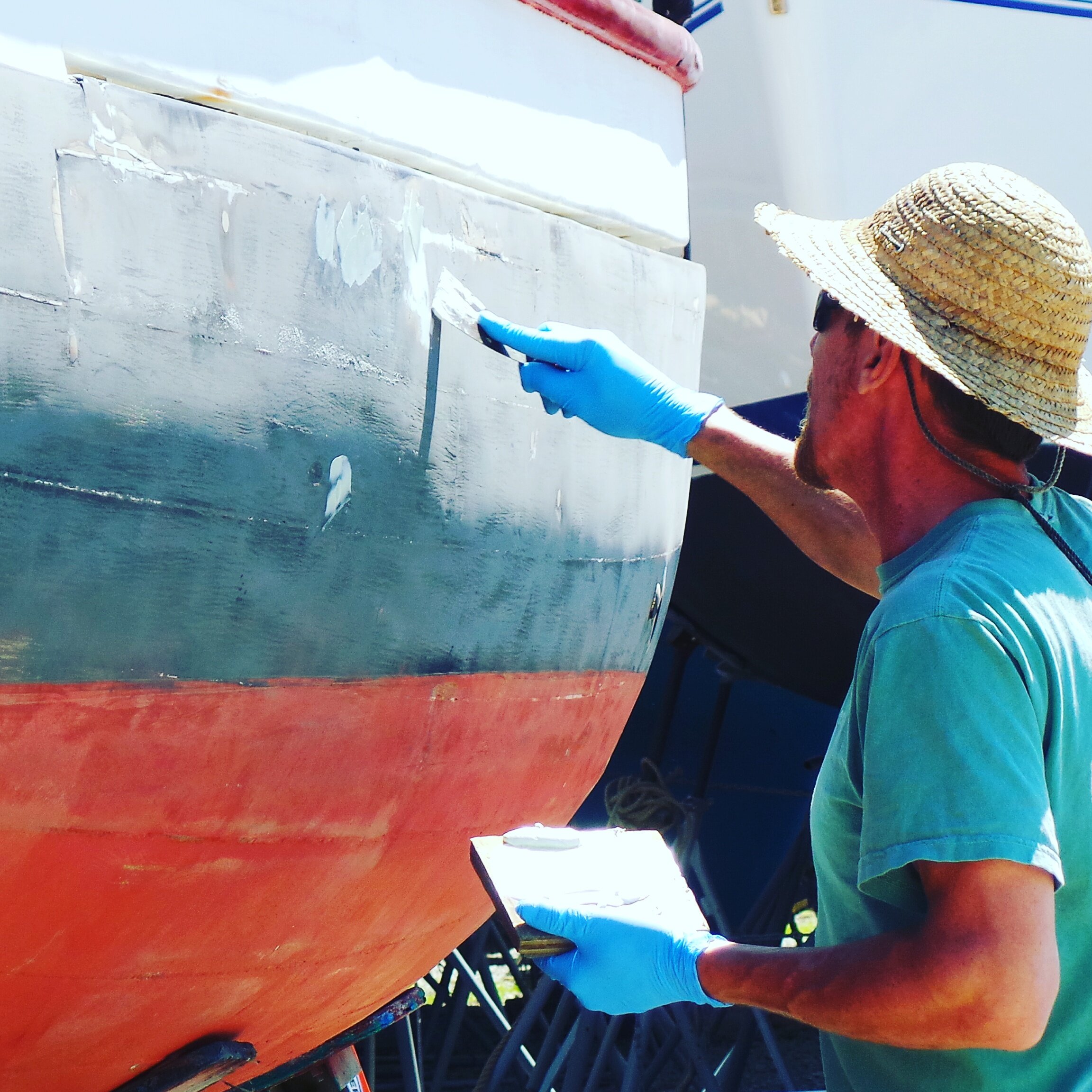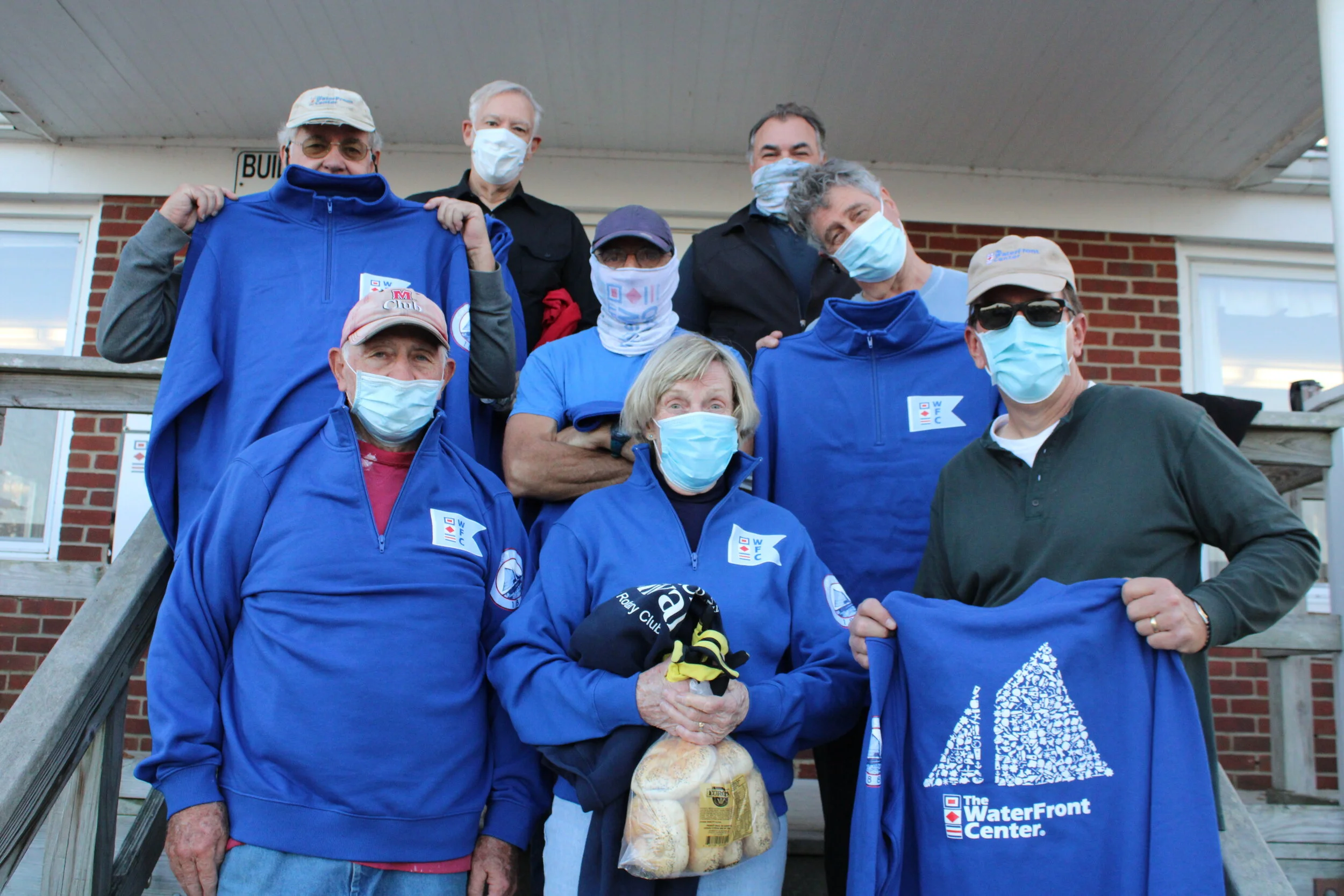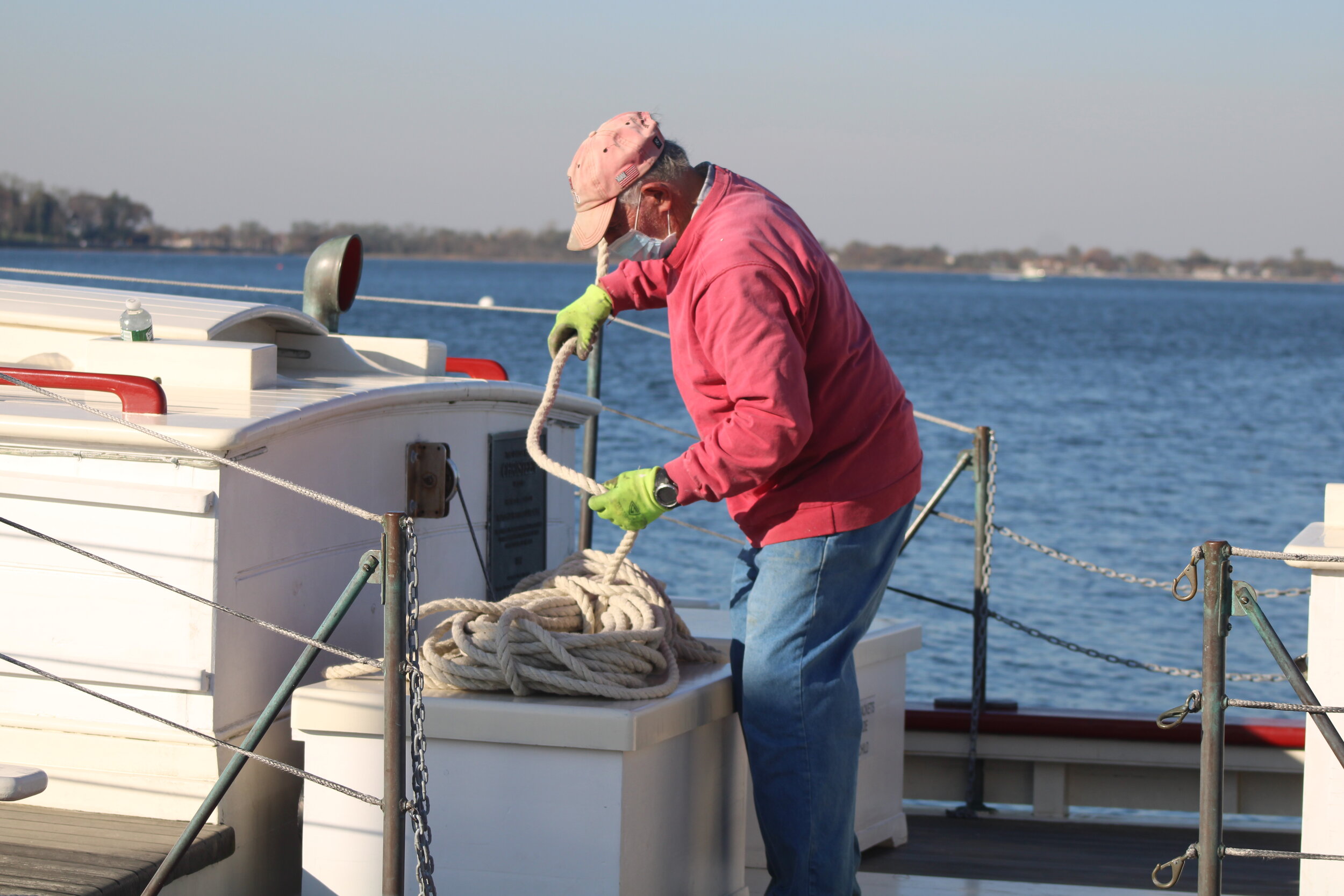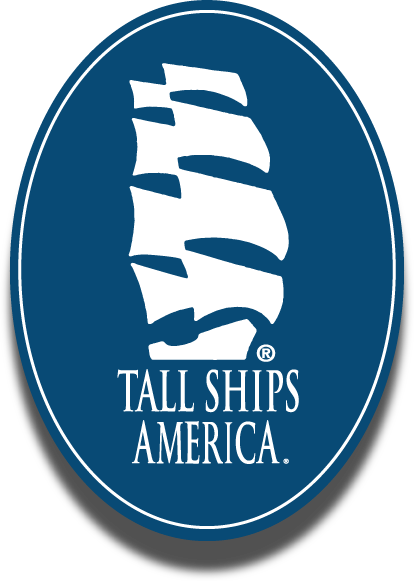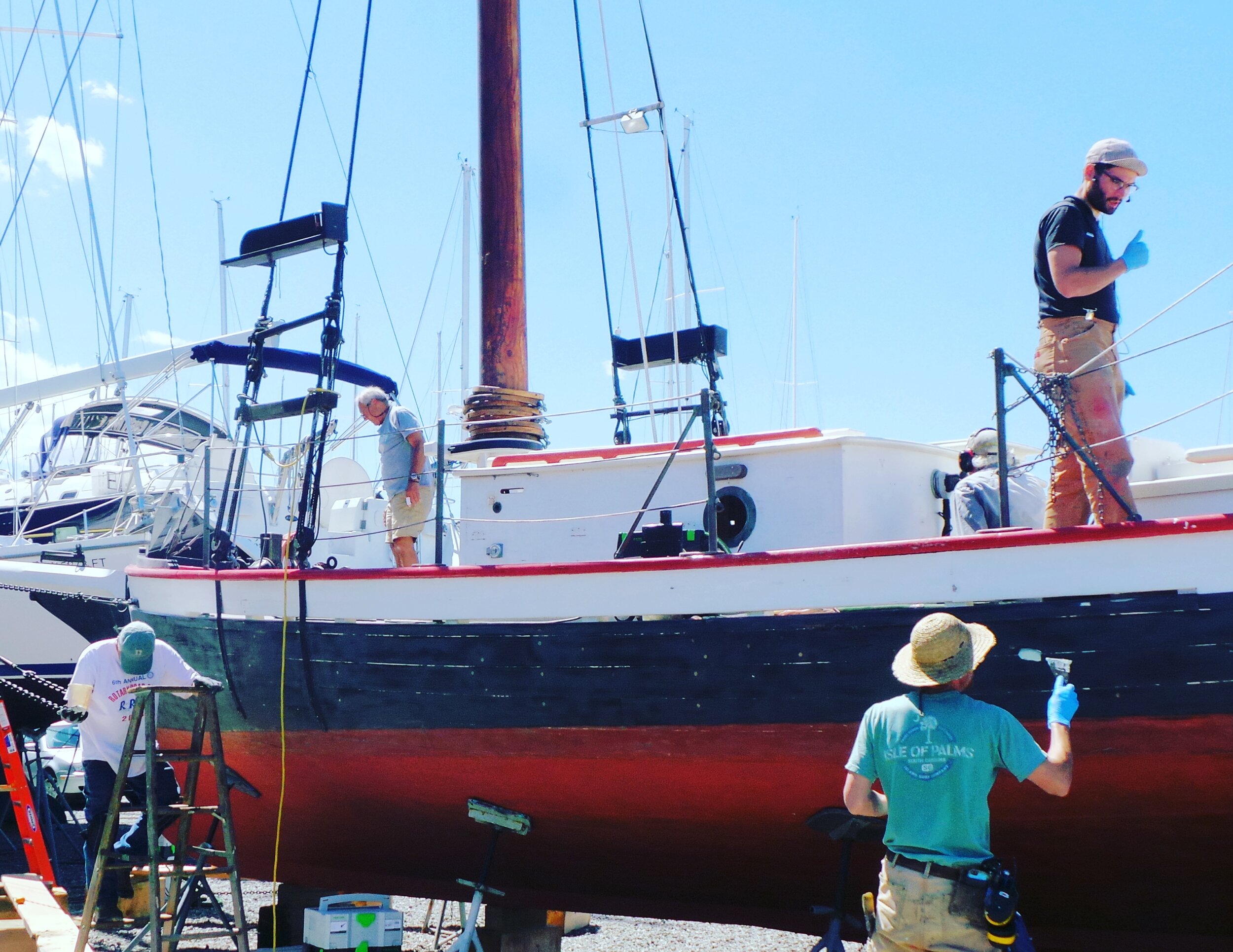
The History of Oyster Sloop CHRISTEEN
From twice sunk to National Historic Landmark
Christeen, a 38-foot gaff-rigged sloop, is the oldest oyster sloop in America and a National Historic Landmark. She was originally built in 1883 for Captain William Smith in Glenwood Landing, New York for harvesting oysters in Oyster Bay and Cold Spring Harbor.
Over her 125 years, Christeen served not only as an oyster dredge but also as a cargo carrier and live-aboard between Connecticut, New York, and New Jersey. After surviving 16 major hurricanes, numerous nor’easters, two sinkings, and severe neglect, Christeen was returned home to Oyster Bay in 1992. A dedicated group of volunteers worked tirelessly on the restoration of Christeen — working alongside a full-time shipwright and raising more than $300,000.
Christeen was completely restored and launched in 1999. Christeen’s new mission is to serve as a floating classroom for The WaterFront Center. Her Coast Guard Certified Captains and experienced crew educate up to 20 passengers about maritime history, marine science, coastal ecology, the oyster industry, and aquaculture.
National Historic Landmark Status
At the turn of the century, oysters were the chief fishery product of the United States. The most common large vessel type built to harvest oysters was the oyster sloop, a generic craft with some regional variation. There are now only three other oyster sloops known to survive and have been designated as National Historic Landmarks in the United States Modesty (1923); Hope (1948); and Priscilla (2006)
Christeen is the oldest surviving working example of an oyster sloop in the United States and an outstanding representative of the early form of the oyster sloop, a type that dates to the 1830s. Of all these vessels, Christeen best exemplifies the type and its employment. In her career Christeen fished, clammed, scalloped, freighted potatoes and furniture, and was a chartered excursion and sightseeing vessel, in short, "she did almost everything these ubiquitous sloops had done" in their long history.
Christeen was built in 1883 at Glenwood Landing on Long Island, for oysterman William W. Smith of Oyster Bay, New York. The vessel was licensed to work the offshore oyster beds of Long Island and to participate in the coasting trade in 1884. The sloop worked the oyster beds and carried occasional bulk cargoes, as did others of her type, through the 19th century. In 1894, then owned by Henry W. Schmeelk, Jr. of Greenwich, Christeen was licensed to work the Connecticut Oyster beds. The sloop continued to oyster and carry cargoes under sail until 1914, when a small engine was added and she was converted to an auxiliary powered motor vessel, retaining her rig but working primarily under power, occasionally oyster dredging and carrying cargoes between Connecticut and Long Island for Capt. William Bond of Southold, New York.
In 1936, Christeen was sold on the occasion of Capt. Bond's death. The sloop worked in the New Jersey fisheries, occasionally serving as a "liveaboard" when laid up for periods of time. After a brief service as an excursion and sightseeing charter boat in the 1970s, Christeen was sold again and became a liveaboard at New London, Connecticut, when discovered and purchased by the Connecticut River Museum, who restored the vessel's 1914 appearance and with the Tradewinds Educational Network, Inc., rehabilitated her to return to sail, and occasionally dredge for oysters, by the Spring of 1991. On December 4th, 1991, Christeen was officially certified as a National Historic Landmark and placed on the National Register of Historic Places.
Christeen was returned home to Oyster Bay in 1992. A dedicated group of volunteers, now known as The Christeen Oyster Sloop Preservation Corporation worked tirelessly on the restoration of Christeen — working alongside a full-time shipwright and raising more than $300,000.
Christeen was completely restored and launched in 1999. Christeen’s new mission is to serve as a floating classroom for The WaterFront Center. Her Coast Guard Certified Captains and experienced crew educate up to 20 passengers about maritime history, marine science, coastal ecology, the oyster industry, and aquaculture.
Source: National Register of Historic Places: Digital Archive on NPGallery - Christeen (Oyster Sloop) - https://npgallery.nps.gov/NRHP/AssetDetail?assetID=90fa93ac-6d71-44c7-81c0-148312f37128
